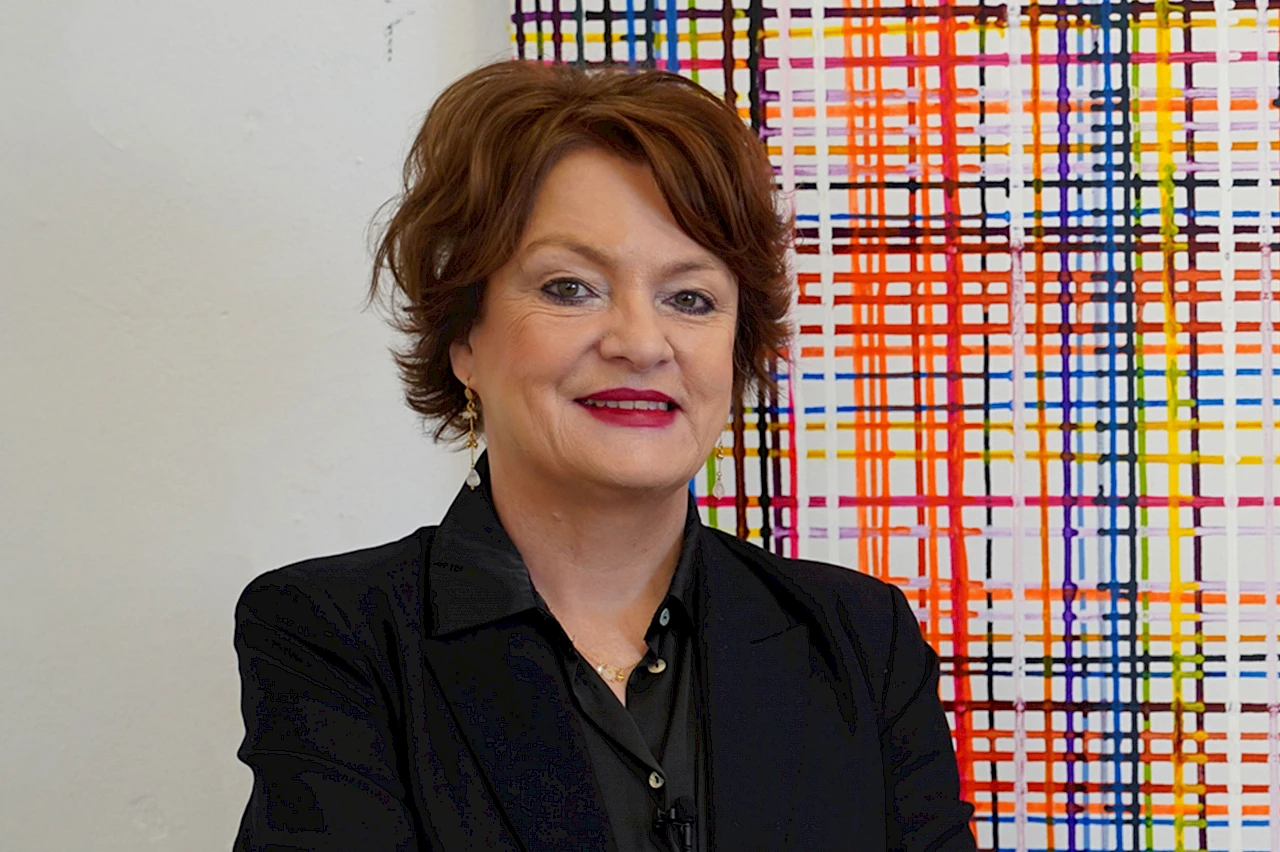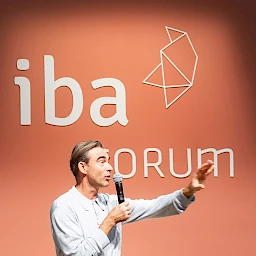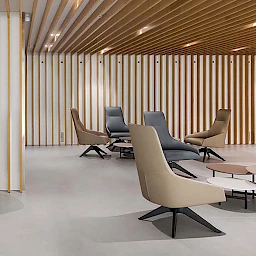In order to enhance the quality of stay in their offices, some companies are including art in their interior design concepts. Dr Ulrike Lehmann is an art educator, speaker and trainer. In her coaching sessions for managers and teams, she uses art and looking at art as an opportunity to communicate and a key to boosting agility and the capacity for innovation. The IBA Forum talked with her about the significance of art in the world of work.
Dr Lehmann, what role does art play in the world of work today?
Art enriches modern work environments that clearly focus on human beings and their abilities, potential and needs. Art activates people, gets team members talking to one another and is an ideal growth medium for inspiration, creativity and innovation. Art has the power to support the transformation of teams in the direction of greater agility and self-efficacy. And art offers people opportunities to talk about something different for a change and to discuss a topic from various perspectives. This encourages people to think outside the box — but that’s not all. Art enables people to engage in a different kind of conversation, take a short break from time to time and then to go back to work refreshed.
Is there a relationship between art and innovation?
There’s a statistic I’d like to cite in this connection. According to a survey conducted by the Association of German Chambers of Industry and Commerce in 2022, only 29 of the 35,000 surveyed companies were planning product innovations. This was the lowest figure since 2003. For me, this finding was a slap in the face. What are the reasons for it? To begin with, either there’s too little creativity in companies or the companies are not encouraging it sufficiently. However, creativity is the precondition for innovation. Companies need a culture of boldness so that they can give space and attention to employees, their ideas and their creativity. Art has the ability to magically elicit new ideas from people. It inspires people and activates them. There are many themes in the visual arts that can be connected with the world of work. We can learn not only from individual works of art but also from the artists themselves. That’s the thinking behind my plea for art and business to be connected more closely in the future.
„Art helps people come up with new ideas and solutions and become creative. It promotes individual creativity as well as communication within a team.“ Dr Ulrike Lehmann
Can you give us an example of how you use art in your coaching activities and how it could be transferred to companies?
I love to visit a museum with other people. There we look together at various works of art that are associated with diverse issues and “trigger” people’s emotions. On the basis of these works of art we then work out individual techniques of artistic creation. In my mind, surrealism, more than any other artistic style, stands for imagination and thinking outside the box. It means taking ideas to the point of absurdity, creating paradoxes, turning things upside down once in a while and thinking in new and different ways. These are abilities that are also needed in the office. For example, the Belgian artist René Magritte had the audacity to put a giraffe into a wineglass. In his art, Pablo Picasso liked to combine things that don’t belong together and connected very different cultures. Other artists such as Kazimir Malevich, Piet Mondrian and Wassily Kandinsky discovered the road to abstraction in the 1910s. Having the courage to think in abstractions can support innovation tremendously. By understanding and applying techniques of artistic creation, art can inspire people more than almost any other discipline and successfully lead a company toward innovations.
What role does art play in connection with corporate culture and corporate identity?
The question “How do we deal with one another?” is an important question about the culture and the identity of a company. Values such as respect, tolerance and appreciation of others can be nurtured by means of art. When I stand in front of a painting together with a team, we’ve got a good basis for an appreciative dialogue. Every individual sees something different in a work of art. This coexistence of multiple perspectives and diversity is a sounding board for cooperation. In my opinion, art is a blueprint for how we can cooperate in a spirit of mutual appreciation in work environments. This means respecting and tolerating differing opinions, making a change of perspective a rule rather than an exception, and regarding diversity as a positive quality.
„Art has the power to improve corporate culture.“ Dr Ulrike Lehmann
To what extent can art promote internal and external dialogue?
Today I believe more than ever before that art is a valuable tool for employer branding. In this area, managers need to have the courage to say to people both inside and outside their companies that they support the use of art. I’d like to see companies integrating art more closely into their processes of work, productivity and creativity and also communicating their involvement with art. After all, young people are more interested in art than one might think. In other words, art plays a role in the lives of young people in particular. Companies’ involvement with art can create a positive impression and enhance their appeal as employers.
Adaptability and the ability to deal positively with changes are more important today than ever before. What can companies learn from art in this area?
How does an artist work? He creates a new work of art every day and reinvents himself every day. Artists work in ways that are intrinsically motivated and they have the resilience they need to deal with setbacks. They think differently, change their perspective, are bold and versatile. These qualities are more important today than ever in the VUCA work environment. The qualities we need most of all today are innovation, inspiration and creativity so that we can build up the adaptability and capacity for change that the times require. Implementing artistic thinking in the world of work is an important step in that direction. That’s because art draws people out of their reserve. The more provocatively art does this, the better. When we look at works of art, we gain the ability to be inspired, develop new ideas and imitate the artist’s boldness as we think in new and different ways and change our direction of travel.
„Artists have always been pioneers. They have demonstrated the courage to think in new and different ways. When art asks me questions and inspires me, it also stimulates me to develop new ideas. These are abilities that are more important in the work environment today than ever before.“ Dr Ulrike Lehmann
Dr Lehmann, thank you for this interview.






